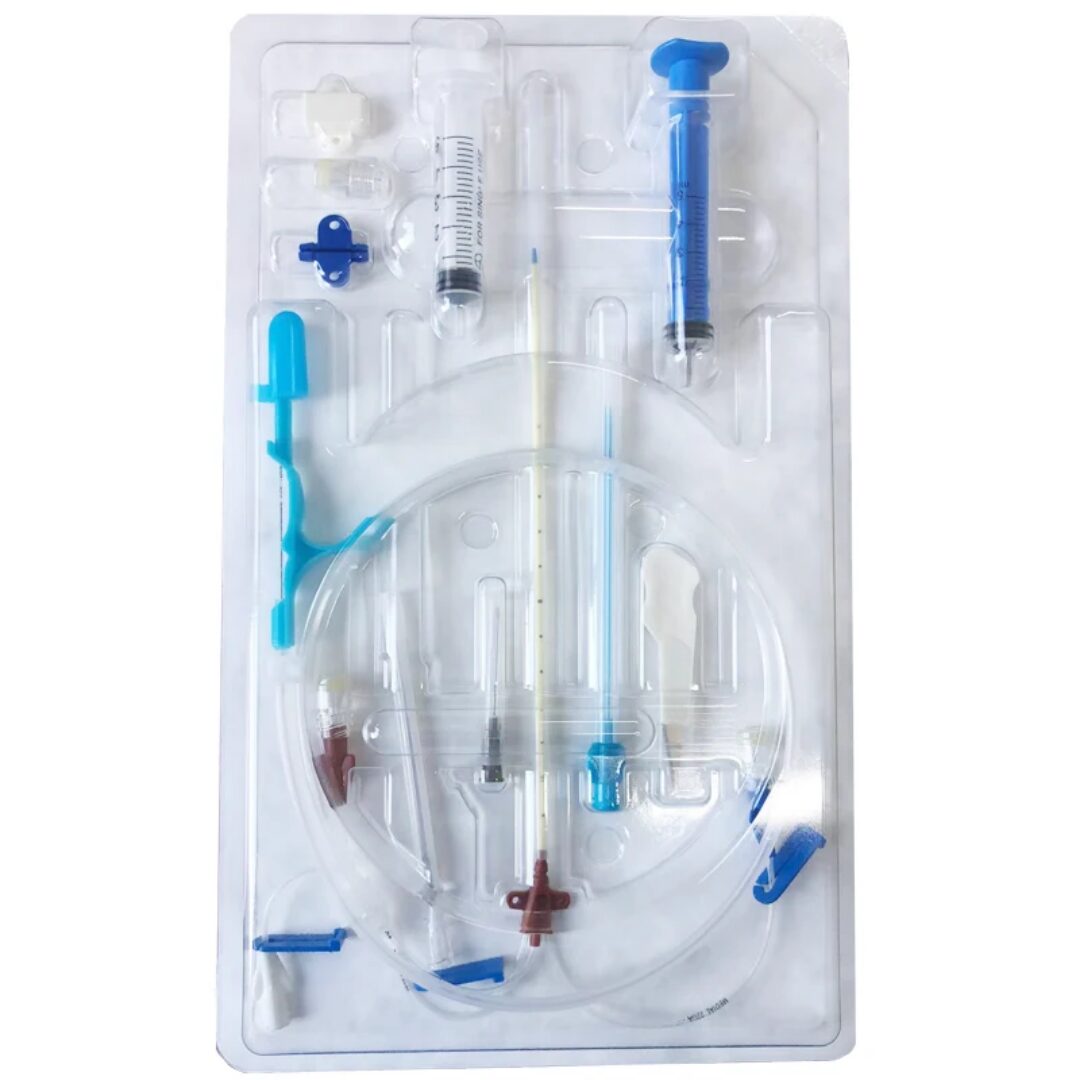Gaiamed’s Central Venous Catheter (CVC) Kit provides a comprehensive collection of medical devices for the precise insertion and secure maintenance of a catheter in a large vein near the heart. This ensures prolonged venous access for various medical procedures. Our CVC Kits are meticulously manufactured in ISO and CE approved facilities, guaranteeing uncompromising quality and reliability for critical patient care.
What is a Central Venous Catheter (CVC) Kit?
Our Central Venous Catheter (CVC) Kit is a comprehensive set of medical devices engineered for the precise insertion and secure maintenance of a catheter in a large vein near the heart, enabling prolonged venous access via the Seldinger technique. These kits are thoughtfully designed and available in single, double, and triple lumen types, offering various sizes and catheter lengths to meet diverse clinical requirements.
Each kit rigorously includes a catheter crafted from high-quality, Radiopaque Polyurethane (PU) with a soft tip for optimal patient safety. Essential accompanying components comprise a vessel dilator, guidewire, color-coded clamp, injection cap, disposable syringe, introducer needle, scalpel, and a movable suture wing for secure catheter fixation.
Product Specifications
Single Lumen Catheter within a Central Venous Catheter (CVC) kit features a single channel, designed for direct and efficient delivery of medications and fluids into the bloodstream. This versatile catheter is typically utilized for administering hyperosmolar solutions, measuring Central Venous Pressure (CVP), performing hemodialysis, plasmapheresis, and enabling rapid fluid infusions, among other critical medical purposes.
Double Lumen Catheter featured in a Central Venous Catheter (CVC) kit provides two distinct, non-communicating vascular access lumens within a single catheter body. This design enhances utility, with the proximal lumen typically designated for blood samples, medication delivery, and blood administration. The distal lumen is utilized for CVP monitoring, as well as additional blood and medication administration. By offering dual access, this catheter significantly reduces the need for multiple venipunctures, proving highly efficient for patients requiring prolonged venous access, particularly in critical care settings for procedures like hemodialysis or other intensive therapies.
The Triple Lumen Catheter found in a Central Venous Catheter (CVC) kit offers three distinct, non-communicating vascular access lumens within a single catheter body, maximizing versatility for complex medical interventions. The proximal lumen is dedicated to blood samples, medications, and blood administration. The distal lumen facilitates CVP monitoring, alongside additional blood and medication administration. Uniquely, the medial lumen is reserved exclusively for total parenteral nutrition. This advanced design significantly reduces the need for multiple venipunctures, thereby minimizing patient discomfort and the risk of infection. Triple lumen catheters are thus the preferred choice in situations demanding comprehensive and concurrent medical interventions.
How should a Central Venous Catheter (CVC) Kit be used? Proper utilization of a Central Venous Catheter (CVC) kit demands a strictly sterile environment and meticulous technique to minimize infection risk. The procedure begins with the operator’s hand hygiene, donning sterile gloves and a mask, and applying a sterile drape to the patient. Following local anesthesia, the introducer needle is precisely inserted into the vein. Once venous access is confirmed, the guidewire is carefully threaded through, the needle removed, and a dilator then used to prepare the vessel. Finally, the CVC is smoothly advanced over the guidewire into the vein, secured firmly, and connected to the appropriate tubing and accessories for its intended long-term use.
How should a CVC Kit be disposed of? Following use, the CVC kit and all its components require strict disposal according to proper medical waste management guidelines. This mandates the careful separation of sharps, including the introducer needle and scalpel, for placement in designated sharps containers, ensuring safe and compliant disposal of all hazardous materials.


One response
Your ability to draw connections between seemingly unrelated ideas is nothing short of remarkable. Every sentence feels like it’s part of a larger whole, and the more I read, the more I realize how carefully each word has been chosen. There’s a depth here that is truly rare.